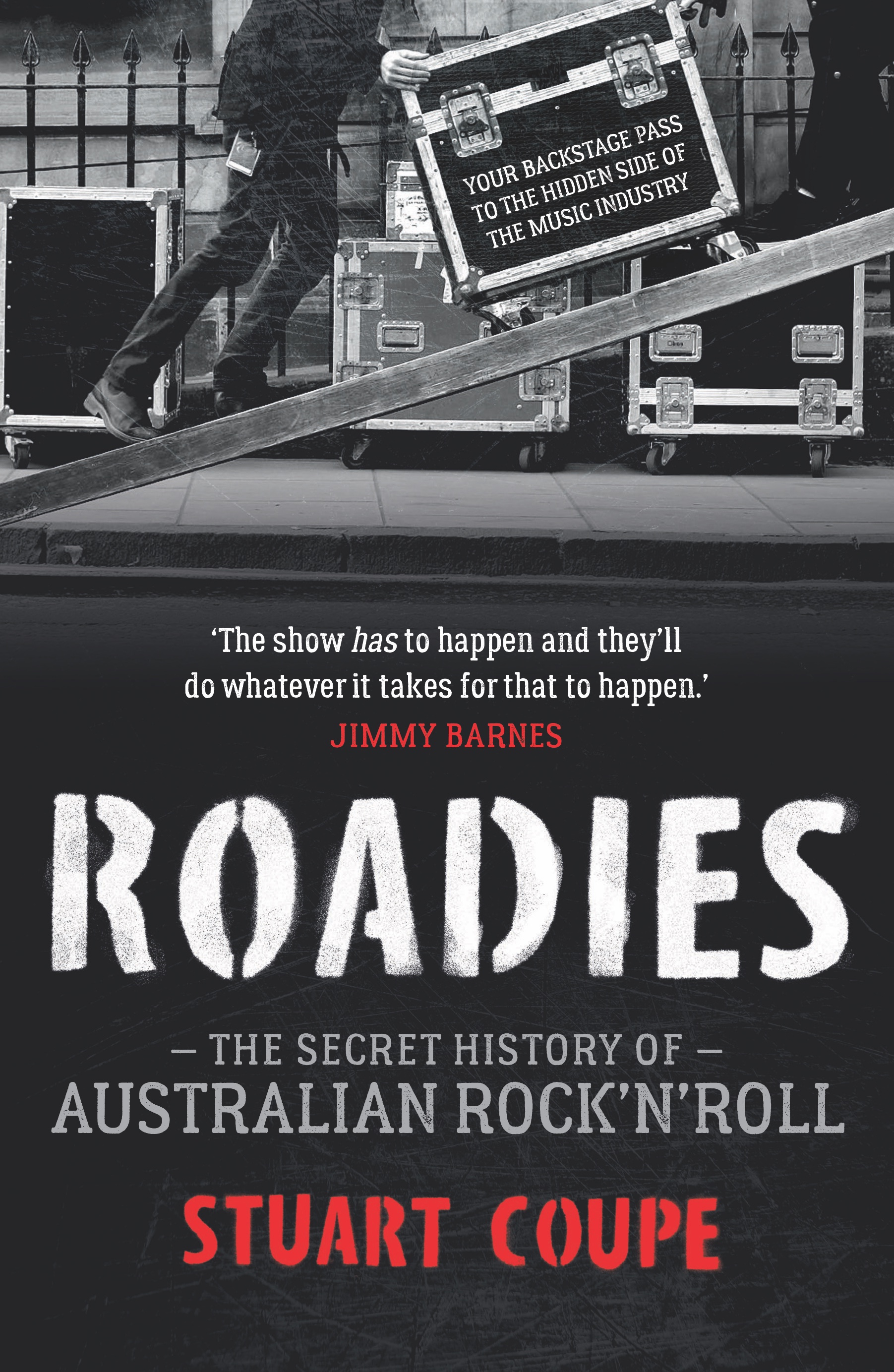‘Trust me, I’m a Roadie’: The Unsung Heroes Keeping Concerts Safe and Sounding Great Night After Night
SafetyCulture News | By | 8 Nov 2018 | 4 minute read

The feedback for Roadies: The Secret History of Australian Rock ‘n’ Roll, since its release in late September, has been hugely positive from the industry it puts the spotlight on.
It’s a book that looks at Australia’s greatest behind-the-scenes players of tours by the Rolling Stones, AC/DC, INXS and more. What it’s achieved is giving crew members, who have kept the live music machine running over decades, rare recognition for their skills and responsibilities, something often overlooked in rock mythology.
Author, journalist and radio presenter Stuart Coupe says he’s received quite an emotional reaction to his depiction of what can often be a “maligned” line of work.
“You never hear the word ‘roadie’ without hearing two other words before it, and those words are ‘just a’. You know?” he says.

From the set-up of the show to its dismantling and move onto the next town, the logistics of gigs, from RSLs to huge arena tours, is no small task. Coupe went behind-the-scenes to see the set-up for Elton John’s show in Wollongong in September last year and says he was “flabbergasted” with the build, which was well advanced even on the Monday before the Sunday show.
“There were at least 100 people working on this build for a show that to set up a stage that was used for maybe three hours. And this was a small tour, so there were only about 26 semi-trailers worth of gear, whereas the Rolling Stones and AC/DC and some of the bigger acts are more like 50-plus semi-trailers these days.
“So I watched this whole construction from virtually start to finish and within 10 minutes of Elton finishing, there was this swarm of 100-plus people on the stage taking it all apart. Elton finished at 8.30pm and they had to get five semi-trailers on the road by about 11pm that night so that they could get gear across for his show in Tasmania.
“I remember, I was just standing there, and there was this really old roadie who clearly knew what I was doing [observing]. He just came up to me in the sort of semi-darkness and stood next to me and he said, ‘Stuart, this is what we do. We build pyramids and then we take them down’.”
Building the jigsaw
Aside from the jaw-dropping bells and whistles that make up a show, there are plenty of mainstay technical components. There’s the video screens, which come in multiple sections that need to be assembled like big jigsaw puzzles. Then there’s elements like the speakers, which are hung or positioned to the most precise of measurements as to what weight can be safely borne, with a margin of error included.
“It’s like a building site, basically,” says Coupe. “Part of my book is confronting the notion that road crew have got lots of muscles and they’re not all that bright, and they’re good at lifting things, which is simply bulls–t. Because you have to be highly, highly, highly skilled to do this job and there can’t be a weak link anywhere in the process.”
He says there are multiple chains of command, even down to people responsible for the content of each of the tour trucks. “They know exactly what is in which truck, [for example] what is on halfway down truck number 17 on the left-hand side, because it will come out as it’s meant to go onstage and it will go back where it’s meant to be found for the next show.”
At the Elton John show, the person in charge of safety and signing everything off was risk and safety manager Momtchill ‘Momo’ Vassilev from event safety services Avert Assure. His responsibilities included overseeing security checks throughout the venue and evacuation plans in the event of an emergency.
Elton John arrived at the venue, WIN Stadium, by helicopter. “There was security all around him as he got off this helicopter,” says Coupe.
“Then he was put in a car to drive probably half the length of a football field to the backstage area, with people all around. That’s the level of security and expertise that’s required to do a concert of that level these days.”
The show must go on
Large-scale tours aside, Coupe’s book reveals much about the demands of everyday gigs, with things like crews carting heavy gear up multiple flights of stairs. But, it always gets done, whatever demands a venue might throw up. It’s a modus operandi of “trust me, I’m a roadie,” he says.
“I really think that roadies don’t ask if something’s possible. I don’t think that they’re actually wired to think about whether it’s possible to do something. They’re wired to just work out how to do it,” he says.
“One of my favourite stories in the book is a simple one about the Church doing a gig in regional Western Australia, and the production company had forgotten to pack a drum carpet. So, Richard Ploog’s drum kit was going to slide all over the stage and it would be impossible for him to play, So one of the road crew he looked down at the hotel room where they were staying, and he said, ‘We’ve got carpet.’ And he got out his knife, they moved the bed and cut out a carpet square, took it, used it for the gig and put it back.”
Which was all fine, until the room got cleaned, the bed got moved and the band got hit with a bill for $1500 for re-carpeting the room—but the show did go on.
Ingenuity aside, a thing in recent years has been the rise of sound settings on a USB stick, particularly with dance acts. But what that can miss is the individual characteristics of venues, says Coupe.
“Every single room is different, you know, and it comes down to, again, skill, and sets of ears, that’s human ears, and it can’t be computerised.”
Experience lends itself to knowledge of the variables for venues. For example, when people start coming into a venue, the room may heat up which might put the guitars out of tune. Then at a certain point, when the air-conditioning goes on, they may go out of tune again.
“You have to have someone who knows exactly what this is going to sound like, and that’s why they spend so much time at sound check, that endless check one, two, play that, do this. Because what roadies do is they spend their entire life in the service of musicians, making them sound and look better than often they should.”
Roadies: The Secret History of Australian Rock ‘n’ Roll by Stuart Coupe is out now (Hachette, $32.99).
Important Notice
The information contained in this article is general in nature and you should consider whether the information is appropriate to your specific needs. Legal and other matters referred to in this article are based on our interpretation of laws existing at the time and should not be relied on in place of professional advice. We are not responsible for the content of any site owned by a third party that may be linked to this article. SafetyCulture disclaims all liability (except for any liability which by law cannot be excluded) for any error, inaccuracy, or omission from the information contained in this article, any site linked to this article, and any loss or damage suffered by any person directly or indirectly through relying on this information.





